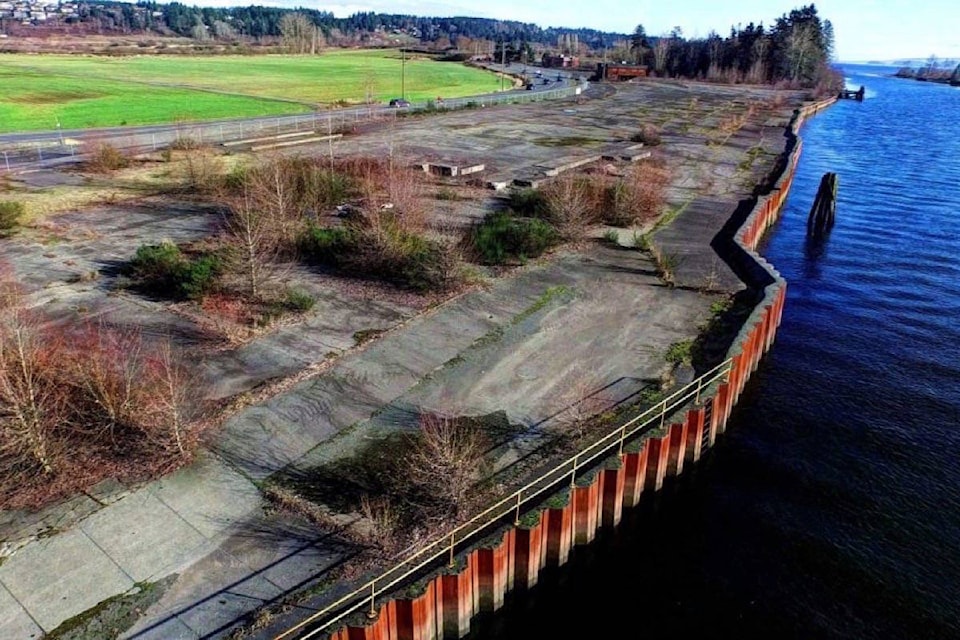An ambitious project to return a former Comox Valley industrial site where First Nation burial grounds were once located to its natural state is one step closer to getting underway.
The B.C. government’s announcement of $650,000 in new funding Friday follows a $1 million 2019 commitment to the Comox Valley Project Watershed Society supporting the purchase of the abandoned Interfor sawmill site located at the edge of the Comox estuary, next to the 17th Street bridge along the Courtenay River and Comox Road.
The announcement is the fulfillment of a campaign promise made by Premier John Horgan a week before his re-election last month.
Senior projects manager Tim Ennis anticipates title transfer of the property to be completed by mid-December through which the K’ómoks First Nation will own 51 per cent, with the remaining 49 per cent by the City of Courtenay.
The project seeks to support fish and wildlife species’ recovery and mitigate regional flooding by returning the 3.4-hectare property to salt marsh, side-channel and riparian habitats.
Read More: When will the Kus-kus-sum wall fall? Update on the Comox Valley project
Read More: Six northwestern Vancouver Island rivers undergoing fish habitat restoration
It is named Kus-kus-sum in recognition of the historic First Nation village and ancestral burial site once located in the area within the territory of the K’ómoks First Nation.
“Being stewards of the lands and waters, it is inherently our duty to restore and assist in the rehabilitation of the natural habitat of the salmon and various marine and wildlife in this area,” K’ómoks First Nation Chief Nicole Rempel said in a news release.
B.C. Ministry of Forests, Lands, Natural Resource Operations and Rural Development noted the estuary is essential salmon habitat and considered one of the most valuable estuaries on the province’s west coast for its size, intertidal biodiversity and species that use it.
The Kus-kus-sum project, including the acquisition of the property, is approximately $6.5 million.
“It depends a little bit on how the funding for the restoration comes in,” Ennis said of the work ahead, estimating the property could be transformed into what will look like a completely natural estuary environment within the next two to three years.
“In an ideal world, if we had all the funding to complete the project in our hands, then we would look for the restoration of the property to take a year to 18 months probably.”
Do you have a comment about this story? email:
rebecca.dyok@wltribune.com
Like us on Facebook and follow us on Twitter.
